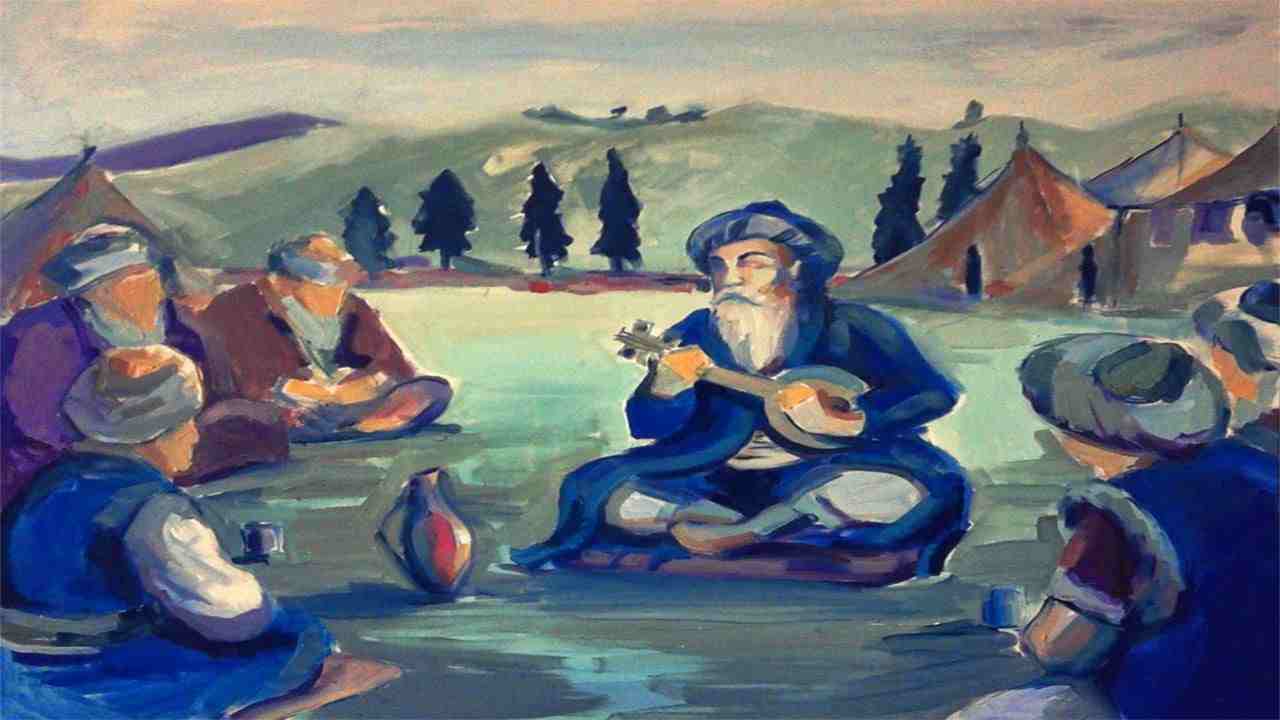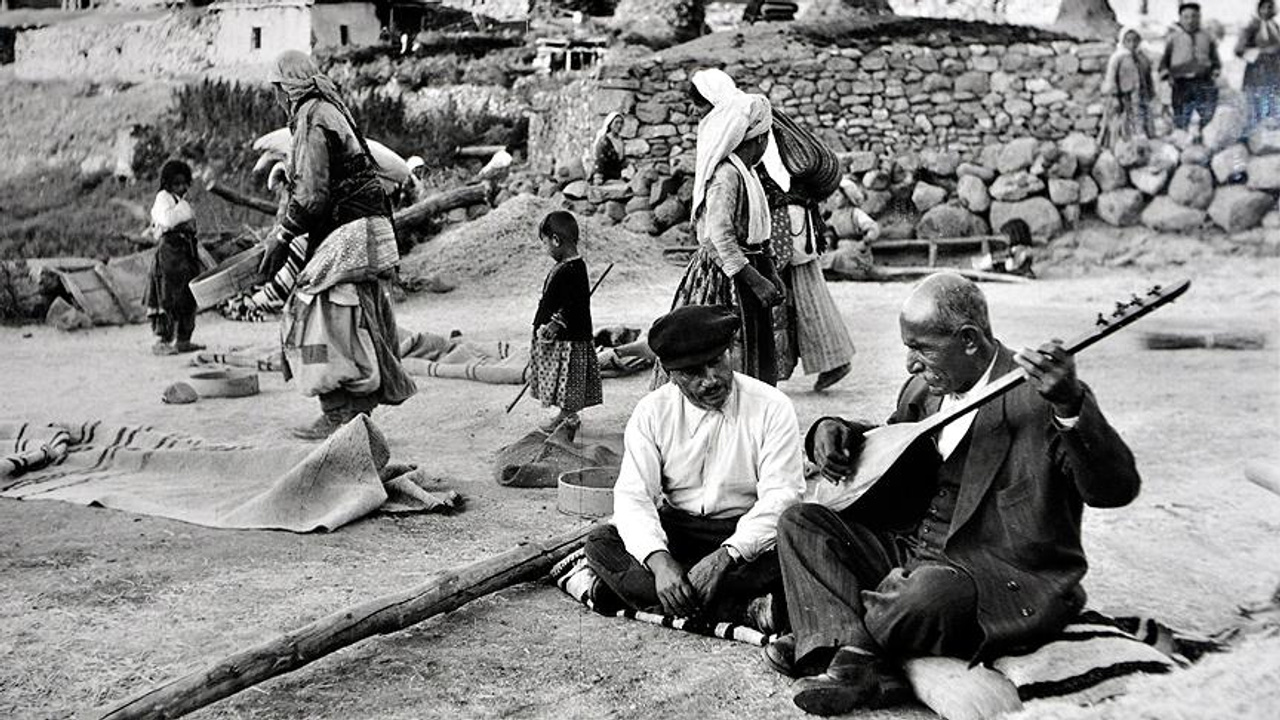Mania, which we know as rhyming words that drummers say in accordance with the rhythm in Ramadan, is actually one of the most important narrative types of Turkish literature oral culture tradition. Let’s take a closer look at what mania is, what its features are, and let’s see some examples of mania over the types of mania.
The month of Ramadan, which is an extremely important month for the whole Islamic world, has a cultural structure besides its religious significance. Undoubtedly, drummers and their songs have a special place among the Ramadan traditions, some of which we encounter only in Turkish-Islamic culture. Actually Mania is much more than the rhyming words of Ramadan drummers in rhythm.
Unfortunately, mania, which we remember only in Ramadan, is actually one of the most important narrative types of Turkish literature oral culture tradition. Wherever you go in our country, it is possible to encounter unique mani specific to that region. From this perspective, mania is an integral part of our culture. Bride Let’s take a closer look at what is mania Let’s see some examples of mania over the types of mania.
What is mania: Types, characteristics and examples:
What is mania?
Mani, which can be said about many different subjects, especially love, is the smallest verse form of folk literature. The Arabic word mani Its Turkish equivalent is kosha, which means double couplet. Most manis have 7 syllables and consist of 4 lines, but there are also different forms. It rhymes a, a, b, a.
What are the mania features?
- The equivalent of mani in divan literature is tuyug.
- Most manis consists of 4 lines with 7 syllables.
- There are also manis, which consist of 5 lines and have 5, 8, 10, 14 syllables.
- The rhyme form of the Manis is as follows;
- While the first, second and fourth lines have the same rhyme, a similar rhyme is not sought in the third line.
- The first and second lines are connected to each other in meaning, but the third and fourth lines give the main meaning of the mania.
- Mani’s are mostly about love, but since there are no limitations, it is possible to encounter manias on many different topics.
The prominent features of mania, which is one of the most important narrative types of Turkish literature oral culture tradition, are generally like this. Manias are often people come together It emerges as an improvisation in celebration or mourning ceremonies. Just as there are countless manias from the past, new manias can be written today as well.
There may be some problems with the meaning of the mani, which consists of four lines, because Although the first two lines fit the general Although it does not fit, it should be evaluated in itself. The last two lines give the full meaning of mania. From a different point of view, it is possible to say that the first two lines are said to strengthen the last line and the third line is actually the main force that directs the subject.
Mania types and their characteristics:
- straight mania
- interrupted mania
- redundant mania
- walking mania
- Phrase
- lash mania
- isthmus mania

Straight mania:
Flat mania, also called full mania, It consists of 4 lines sung with 7 syllables. The rhymes of straight mania, one of the most common types of mania, are without puns. There is a fairly familiar rhyme form a, a, b, a.
Cut mania:
Intermittent mania, also known as puny mania The first line is less than 7 syllables and it is often meaningless because the sole purpose of the first line is to rhyme. If the interrupted mani, also called Hayrat, is sung in a square and starts with ‘oh my god’, it is called Istanbul mani.
Redundant mania:
Redundant mania, also called residual mania, is sung by adding two more lines to the end of straight mania. No use of puny rhyme The first line of the redundant mania is also meaningful. The purpose of saying a redundant mani by adding two more lines to the end of the plain mani is to complete or strengthen the narration.
Footed mania:
Footed mania, also called intermittent mania with filling, is sung with the filling of the first line of an interrupted mania. The first line of the discontinuous mania less than 7 syllables We can say that mani with feet emerges when it is filled in accordance with the general syllable measure.
Phrase:
Manias that two people say in the form of mutual bickering are called idioms. Generally proceeds in a question-and-answer format. Those who say idioms can conduct this show in a fun and enjoyable way, as well as harshly criticizing the other party, each other or a completely different subject.
Lash mania:
We said that puny rhyme is not used in cut manias. If one if puny rhyme is used in cut mania now it is referred to as lash mania. Eyelash mania can also be called punned mania.
Throat mania:
Throat mania is exactly the same as plain mania in terms of spelling features. However, the way it is pronounced is different. isthmus mania It is sung on the rhythm played with an instrument such as a saz, kopuz or drum. It is extremely common to say mani with isthmus in the Iranian Turks and the Turkestan region.
Examples of mania:

flat mania;
If it weren’t for those mountains
If the flower had not withered
Death is the command of the God
If there was no separation
As your eyebrows say ok
When your eyelashes say too much
Did your heart grow
As I say there is no one like you
interrupted mania;
good bye
Nightingale, bye-bye
I entered a friendly vineyard
Crying a lot, laughing a little
to the throat
I have a problem in the throat
I’ll carve out your Muscovite eye
If you look sideways at the throat
tie me
garden me tie me
The chain does not profit
Zülfün wire tie me
Roe
I got your love rifle
I shot a few deer
I loved a friend in the world
Eyebrow deer
redundant mania;
My nets are like ages
I have a problem like mountains
I’m injured from the liver
I smile as if
Everyone who comes wants a rose
like vineyards
I have a problem like bells
I don’t say like hands
my heart has sadness
like broken hands
tears flow from my eyes
like a flooded flood
Footed mania;
oh it me it me
The bangs covered me
I don’t forget half
Even if he forgets me
Phrase;
My dear, how are you?
You scatter pearl coral
When the world is the sea
Where do you run to my heart
My brother is my skin
I scatter pearl coral
When the world is a sea
I’ll be a bird and run away
My dear, how are you?
You scatter la’l lily
When I’m a hawk
Where do you run to my baby
My brother is my skin
I will scatter la’l lily
When you’re a hawk
I run to places
My dear, how are you?
You scatter the la lily
When I’m Azrael
Where do you run to my lamb?
My brother is my skin
I will scatter la’l lily
when you’re an angel
i run to heaven
One of the most important narrative types of Turkish literature oral culture tradition. what is mania, what are its types We answered some of the most common mania examples and included some of the most common mania examples. You can share your thoughts about Mani in the comments.
